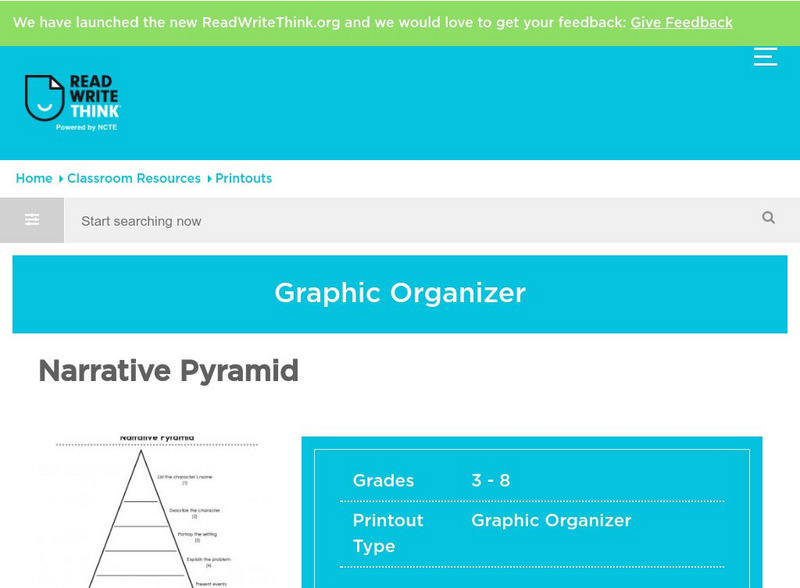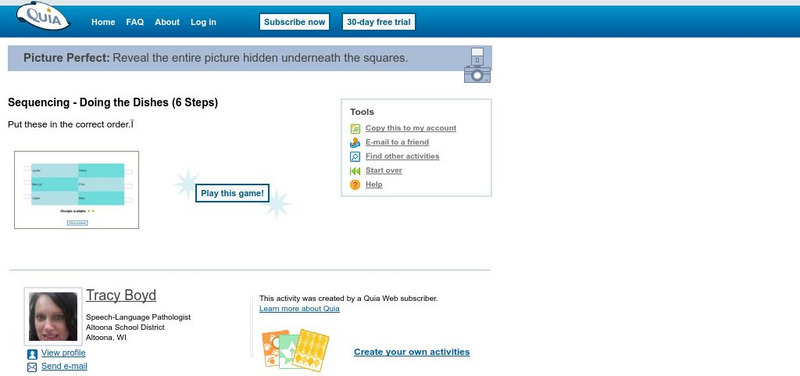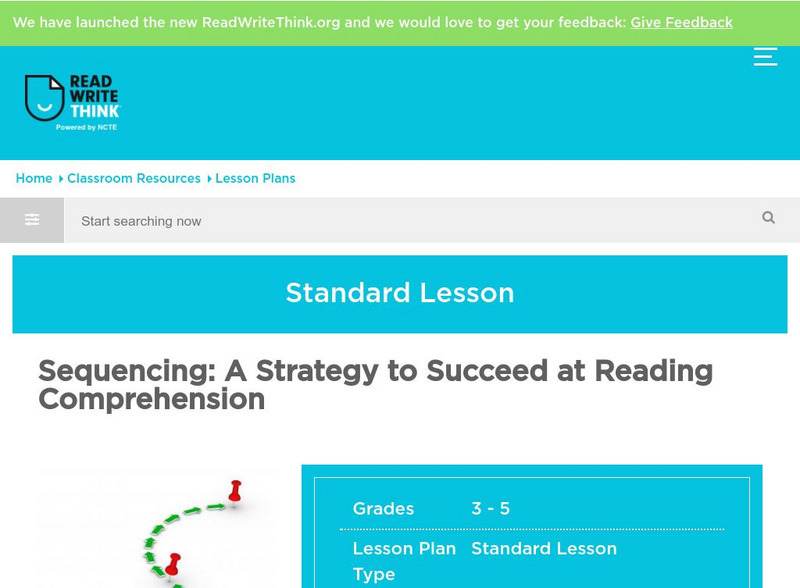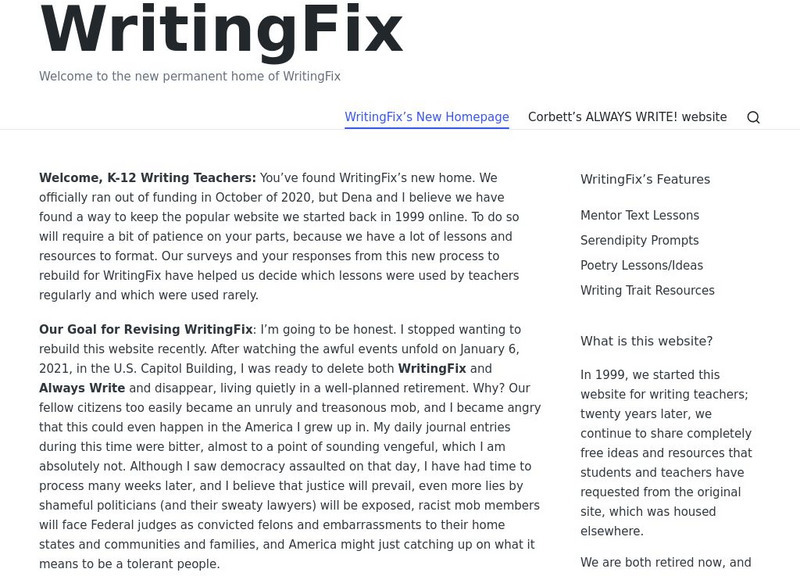Curated OER
Mc Graw Hill: Part 1 Reading: Literature: Understand Literary Allusions
Understanding literary allusions can help in your understanding of readings. Learn about literary allusions on this site.
Curated OER
Mc Graw Hill: Identify Author's Point of View
Learn the techniques an author uses to share his or her point of view on a subject then practice identifying an author's purpose on your own.
McGraw Hill
Mc Graw Hill: Craft and Structure: Point of View
This learning module focuses on the types of point of view, how the point of view impacts the description of events, and the impact of the types of narrators. It provides an example with an explanation and a practice activity with...
Other
Mesa Public Schools: Author's Point of View [Pdf]
Chart defines the three different points of view authors can use to express their ideas.
Other
Frontier Central School District: Determining the Theme of a Literary Work [Pdf]
Guidance and exercises for finding the theme of a literary work, including a list of commonly seen universal themes.
ReadWriteThink
Read Write Think: Narrative Pyramid
A printable narrative pyramid where students can record information about a story including the character, setting, problem, main events, and solution. Directions on how to use this type of graphic organize as well as lists of teaching...
ReadWriteThink
Read Write Think: Book Report Alternative: Examine Story Elements Using Comic Stri
Comic frames are traditionally used to illustrate a story in a short, concise format. In this lesson, students use a six-paneled comic strip frame to create a story map, summarizing a book or story that they have read. Each panel retells...
ReadWriteThink
Read Write Think: Planning Story Characters Using Interactive Trading Cards
Students use trading cards to examine fictional characters in a story.
Quia
Quia: Polygon Quiz
In this game, students are to number the steps for making cookies in chronological order to reveal a hidden picture.
Quia
Quia: Doing the Dishes
In this game, students are to read all nine steps to making homemade pizza and then number them in chronological order to reveal a hidden picture. Java is required.
ReadWriteThink
Read Write Think: It Doesn't Have to End That Way
Literary response and prediction are the focus of this lesson plan. Knowing story structure is an important skill for literary analysis, and this gives teachers a way to help learners develop this skill. Includes links to web resources,...
ReadWriteThink
Read Write Think: Using Picture Books to Teach Characterization
Contains plans for two or three lessons that ask students to examine characterization in picture books to use as models for their own writing. In addition to objectives and standards, this instructional plan contains links to sites used...
ReadWriteThink
Read Write Think: Sequencing a Strategy to Succeed at Reading Comprehension
Contains plans for lessons that use the story of Paul Bunyan to teach about sequencing and order of events. In addition to objectives and standards, this instructional plan contains links to sites used in the lessons as well as...
Quia
Quia: Elements of Literature: Rags to Riches
Answer the 15 questions in this game about literary elements for the prize of fame and fortune. Java is required.
Annenberg Foundation
Annenberg Learner: Journey North: Reading Strategies: Identify Author's Viewpoint
This reading resource discusses the strategy of identifying an author's viewpoint. A list of guiding questions is provided to help students as they analyze the author's viewpoint.
John F. Kennedy Center
The Kennedy Center: Arts Edge: What a Character!
In this lesson, students analyze how a character's personality traits, actions, and motives influence the plot of a story. Students also learn how storytellers use their face, body, and voice, as well as the five senses, to enhance the...
Curated OER
National Park Service: Elements of Literature [Pdf]
A PDF glossary listing and defining literary elements.
ReadWriteThink
Read Write Think: Teaching Point of View With Two Bad Ants
Contains plans for two lessons that teach point of view using the book "Two Bad Ants" by Chris Van Allsburg and titles from the from the "Look Once, Look Again" series by David M. Schwartz. In addition to objectives and standards, this...
Writing Fix
Writing Fix: Actions Speak Louder Than Words
After hearing and discussing an excerpt from Sharon Creech's Walk Two Moons, students will plan to create a unique description of a character that uses memorable actions that "show" a person's character. They will brainstorm verbs that...
E Reading Worksheets
E Reading Worksheets: Character Types Worksheets and Lessons
This online learning module offers lessons about "characters" and practice exercises about "characters" in stories. These lessons are organized according to the grade levels to which they apply.
E Reading Worksheets
E Reading Worksheets: Character Traits Project
In this learning module, students will learn more about learn more about character traits. Directions and rubrics for a group project are provided to reinforce the understanding of character traits. This module is designed to support...
E Reading Worksheets
E Reading Worksheets: Characterization Group Project
In this learning module, students will learn more about characterization. Worksheets are provided to reinforce the understanding of character traits. This module is designed to support Tier I, Tier II, and Tier III students.
E Reading Worksheets
E Reading Worksheets: Story Structure Activities
This learning module provides remediation and extra practice with analyzing story structures. Reinforcement for story structures is provided through the two PowerPoint lessons, three quizzes, and four different worksheets.
E Reading Worksheets
E Reading Worksheets: Point of View Worksheets
The learning module provides numerous drills via worksheet and video lesson links that cover different grade bands and text levels. Each exercise includes excerpts from famous works of literature and famous authors.


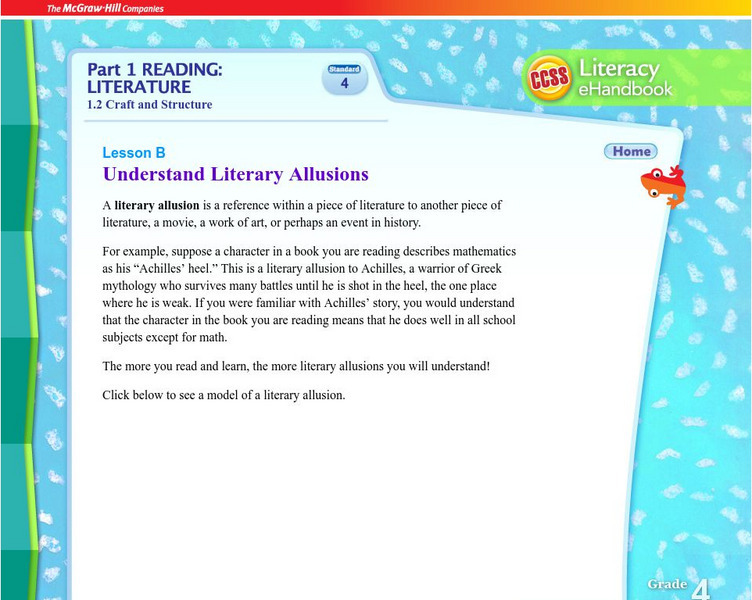

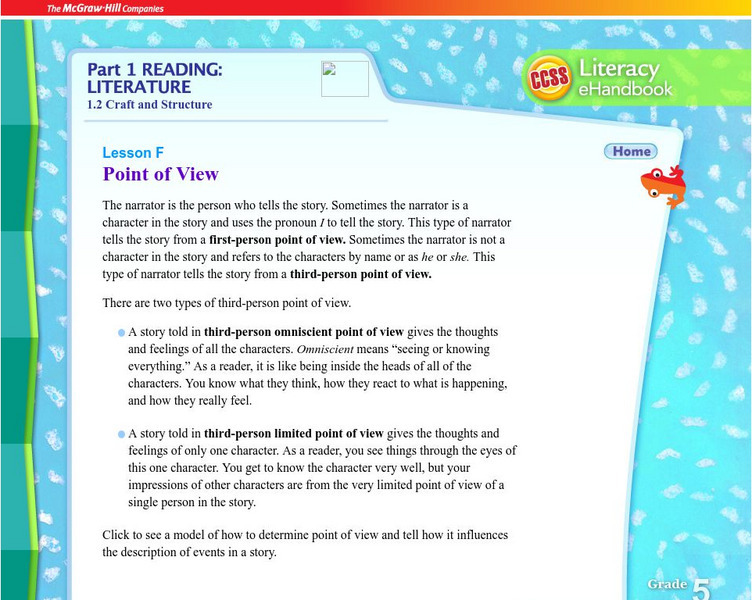
![Mesa Public Schools: Author's Point of View [Pdf] Graphic Mesa Public Schools: Author's Point of View [Pdf] Graphic](https://d15y2dacu3jp90.cloudfront.net/images/attachment_defaults/resource/large/FPO-knovation.png)
